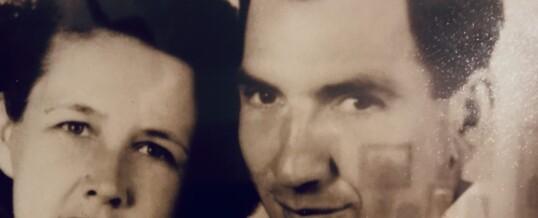
My grandparents lived modestly. Most from their generation did.
It wasn’t a choice. It was necessity.
My grandmother and grandfather were teens when the depression hit, so instead of enjoying their formative years, they worked to eat. They worked to survive.
I heard a lot about the depression. The thing I heard most often was that no one had anything; at least nothing of significant value, and certainly nothing that was frivolous.
When I came along in the early 1960s, the post-World War II economy was booming. But those who lived through the 1930s, including my grandparents, were never comfortable with being comfortable.
Simplicity still ruled. If something could be done for free, it was.
Such was the practice of relaxation my dad’s parents enjoyed almost every afternoon. They sat and drank coffee under a chinaberry tree.
My grandparents’ modest wood-frame home was white. It had a small front porch, which was just big enough for a few people to stand on while waiting to come inside. Directly in front of that porch, about 25 feet out, was a chinaberry tree.
Unknown to me at the time, chinaberry trees were not native to the American South. They came from India. During the mid-20th Century, due to their hardiness and the great shade they provided, chinaberry trees were a favorite of Southerners.
The chinaberry tree that sat proudly in my grandparents’ front yard started out small. I watched it grow. And keep growing.
There were two metal chairs under the tree. They were positioned to face the road so that my grandparents could wave at anyone coming or going, or they could greet someone who drove into the driveway for a visit.
That’s where I have some of my favorite memories of my grandmother and grandfather. Seeing them sitting under that chinaberry tree and waving to us as we arrived or departed in my parents 1960 Buick.
I would often be invited to find another chair to join them. But usually my cousin Roger and I would sit cross-legged on the ground and look for four-leaf clovers as my grandfather regaled us with stories of working in the shipyards in Houston during the war.
If my grandmother told stories (which, more often than not, she left to our grandfather), she would tell the story of my grandfather coming to the church she attended and talking to her through the open window during services.
Our grandfather didn’t attend church at the time, so if he wanted to call on her, he knew he had a captive audience if he went to see her during church.
Under the chinaberry tree, my grandfather would talk about customers he’d had that week or day in his blacksmith shop. He’d tell of a plow he’d repaired or how many handsaws he’d sharpened.
He earned his keep, my grandfather. And so did the chinaberry tree.
That tree seemed to grow to be just as wide as it was tall. The shade was significant, just like the conversations beneath it.
One day when we drove up, the chinaberry tree was gone. A hole remained.
My grandfather said that the root systems for chinaberry trees weren’t very big and that the tree itself didn’t live that long. But he said he thought it would come back and we’d have shade one day again soon.
He was right. That chinaberry tree rose like a phoenix. In another year or so, it grew high enough so that the metal chairs were back, and so were my grandparents.
I believe it was their favorite thing to do with each other. Spending time under the chinaberry tree.
But time was limited.
My sister answered the phone and broke the news.
They were sitting under the tree and my grandmother was talking. He failed to answer. She looked over as his coffee cup pivoted on his finger and emptied itself onto the ground. My grandmother called to him, but he was gone.
Most of us have favorite spots. Places where we like to be. Places that fit us. Places that are an extension of ourselves. Places to share with those we love.
For my grandparents, that place was under the chinaberry tree.
©2022 John Moore
John’s latest book, Puns for Groan People, and his books, Write of Passage: A Southerner’s View of Then and Now Vol. 1 and Vol. 2, are available on his website – TheCountryWriter.com, where you can also send him a message and hear his weekly podcast.
AUG
2022
